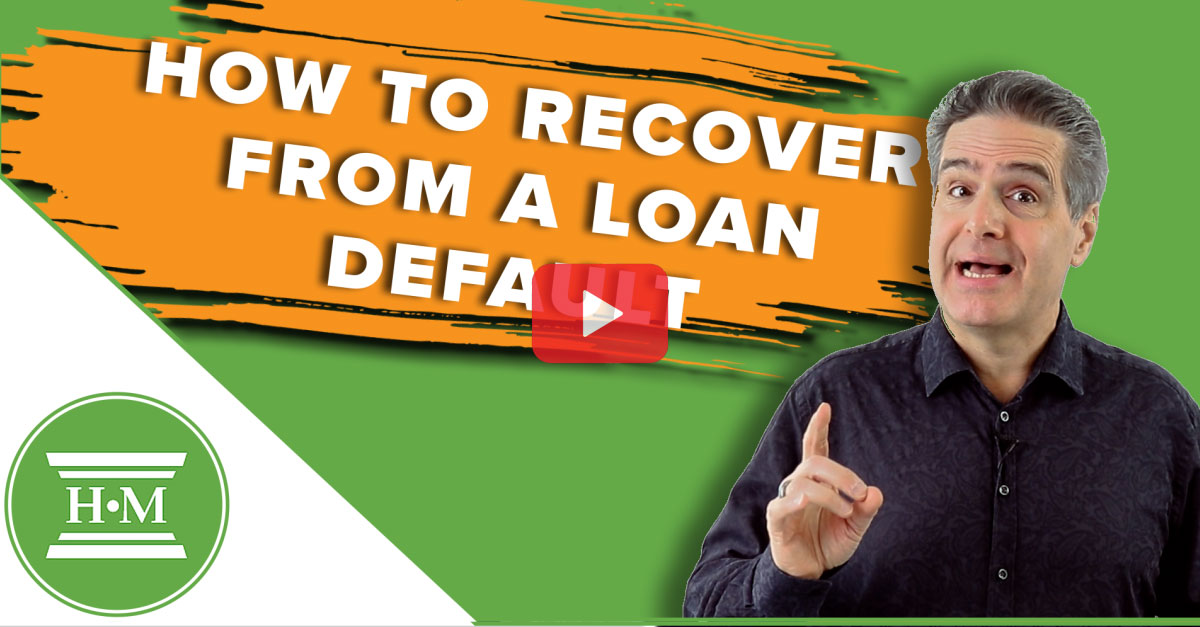
Defaulting on a loan has serious consequences, both for your finances and your credit. Missing a payment or two can be rectified, but being several months in delinquency, however, has bigger implications. Here is some advice on what you can do if you are in default on your loan and what you can do to avoid default and bankruptcy.
Table of Contents
What does it mean to default on a loan?
When you fail to make a payment or meet a financial obligation under the terms of your loan, you are in default on that loan. For example, if you don’t make your monthly mortgage payment or car loan payment, you are in default. This triggers a lot of possible actions from reporting the late payment on your credit report to collection calls and eventually to legal action like foreclosure or a wage garnishment.
Read more: Stop collection calls.
How does a loan default affect your credit?
With email today, you will often receive a polite notification that your payment is late. If you just forgot, don’t worry just make your payment and all will be well.
Most financial institutions do not report a late payment until it is at least 30 days past due. In fact, they have a rating scale for default. An R2 rating means you are 1 month late, an R3 means you are 2 months delinquent in your payments. An R4 generally means 3 months behind or in collections.
Having a mark on your credit report showing that you are unable to meet your payments on time lowers your credit score and can mean you will be turned down for future requests for new credit.
What can your creditors do to collect?
If you are significantly behind on say a credit card debt, your lender will first issue a notice of collection. They will then begin to make phone calls and eventually will refer your account to a collection agency. At that point they will also cancel your existing card.
If you are working, your creditor may also try to collect default payments through a wage garnishment. Your creditor will first need to file a claim with the court to prove the amount owing. Once they obtain judgment they can then apply for a wage garnishment order, and then they can send that order to your employer to begin withholding funds to be paid towards your outstanding debt.
How are secured loans different?
Loans that are secured by assets, like your mortgage or a secured car loan, have more implications than just a collection call. If you are significantly in default, your lender will take the remedies available to them under the terms of the loan agreement you signed with them.
Read more: How a proposal protects your assets.
In the case of a mortgage in arrears, this can mean that the mortgage lender can begin foreclosure proceedings. Your mortgage lender must make a statement of claim, obtain a judgment from the court and then get an execution order to recover any losses they incurred.
If you default on a car loan, your car loan lender will similarly attempt to collect, and then may try to seize and sell the car to recover the amount owing. They will sell the car then pursue you for any shortfall.
Any shortfall from the sale of a secured asset to cover a loan can be included in a bankruptcy or consumer proposal.
Options available if you are in default
If you are already behind on your payments, you still have options. The best solution depends on whether you can afford to catch up on missed payments and pay your debt off.
Negotiate time to pay
You can negotiate a payment plan with your creditors. You may want to ask for additional time to pay arrears or create a whole new repayment plan.
You could also try to refinance through a debt consolidation loan however if you have accounts in default due to late payments your credit score may be too low to qualify for a new debt consolidation loan. Even if you do, the interest rate may be higher than you can afford to pay.
Consider filing bankruptcy or a proposal
Default is not the same as being insolvent. Being in default is the term used to refer to the condition of your loan agreement. You are in default if you cannot meet the terms of the loan. You are insolvent if you are financially unable to meet your obligations generally as they become due. You can be insolvent even if you are current on all your debt payments, in fact, many of our clients are entirely up to date on all their payments when they file.
If you feel you cannot repay your debts in full, then you may want to consider filing bankruptcy. If you have assets you wish to protect but still need debt relief, then a consumer proposal may be a good option.
Being in default on your loans is not the end. You have options to allow you to recover from this financial strain. The key is to lower your debt, so you no longer risk future default. Taking care of the underlying debt problem improves your cash flow and allows you to begin the process of rebuilding.





